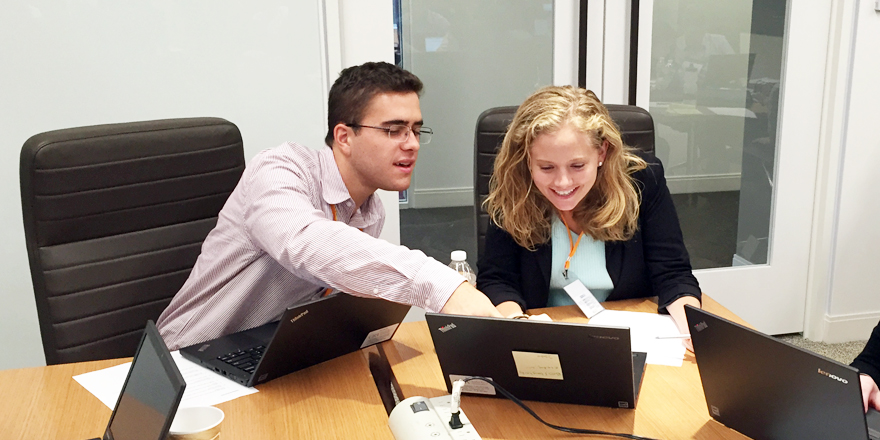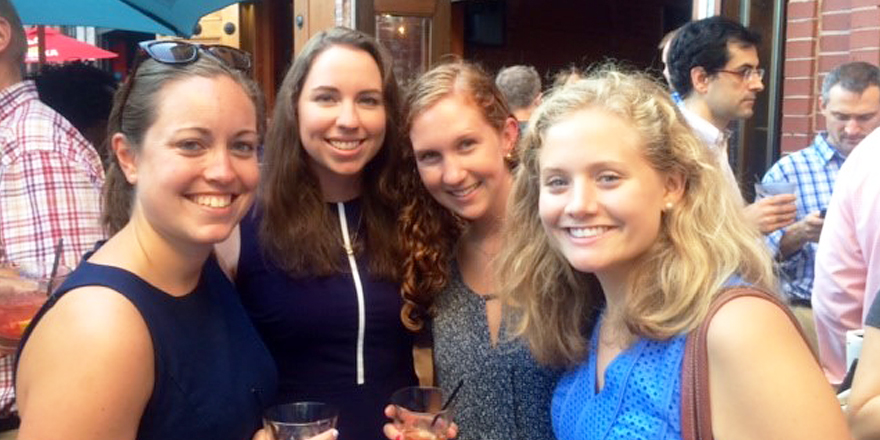I start every day with a trip to the office kitchen with the Finance Practice junior staff. It’s not so much about the coffee and morning snacks, rather, it’s catching up with my peers about the prior night and discussing the tasks on our agendas for the day. After I’ve had my coffee, responded to emails, and addressed any pressing tasks, I typically touch base with my project managers. The projects I work on in the Finance Practice are primarily litigation related and my daily work involves coordinating my work-product and deliverables for the attorneys, testifying expert, and the ultimate client involved in the lawsuit. Since starting at CRA, I have worked on projects in the renewable energy, education, transportation, and food industries. I have gained exposure to working with different data analytics software and financial modeling approaches.
 The first project I worked on at CRA was a case which involved valuing a specific type of renewable energy system. I served as the lead analyst on the team and worked directly with my senior staff project manager to develop a valuation model which could be used to support our testifying expert’s report. Our testifying expert for the case is a finance professor at a large research university. In addition to creating a valuation model, I worked directly with our expert in performing tasks related to the core financial modeling for the case. For example, I worked on building and analyzing a discounted cash flow valuation model.
The first project I worked on at CRA was a case which involved valuing a specific type of renewable energy system. I served as the lead analyst on the team and worked directly with my senior staff project manager to develop a valuation model which could be used to support our testifying expert’s report. Our testifying expert for the case is a finance professor at a large research university. In addition to creating a valuation model, I worked directly with our expert in performing tasks related to the core financial modeling for the case. For example, I worked on building and analyzing a discounted cash flow valuation model.
A typical day involves many informal meetings with my project manager and working with the available data. It generally takes some time to determine what data we have available and what types of analysis we would be able to perform with that data. Once we have mapped out a plan for our analysis, we typically meet with the expert and the attorneys to ensure that our analyses will be in line with the case strategy. It has been tremendously rewarding to work on this case from its early stages when we were developing the preliminary analysis and to see that analysis develop as the case has progressed.
 As I have gained more experience in my position, I have had the opportunity to take on more responsibilities, including working simultaneously on multiple projects. This has taught me how to prioritize tasks and how to be assertive when I need support. Analysts at CRA are given a great deal of responsibility on project teams, and the collegial office environment is such that I never have to shy away from asking questions when developing analyses. My coworkers are always willing to provide insights and guidance to help me perform complex tasks. This collegial office atmosphere has also allowed me to greatly improve my technical skills, and I have learned how to be a better team member as well as how to adapt to different work styles. Although the project teams I have worked on at CRA have covered many different industries and types of analyses, all of my project teams have taught me the importance of having a supportive and open environment as a key to a successful project team. I have already found mentorship in my project managers in my practice. They have taught me both the soft skills and the technical skills to help me keep up with the learning curve and have pushed me to take on more responsibilities to become a better consultant.
As I have gained more experience in my position, I have had the opportunity to take on more responsibilities, including working simultaneously on multiple projects. This has taught me how to prioritize tasks and how to be assertive when I need support. Analysts at CRA are given a great deal of responsibility on project teams, and the collegial office environment is such that I never have to shy away from asking questions when developing analyses. My coworkers are always willing to provide insights and guidance to help me perform complex tasks. This collegial office atmosphere has also allowed me to greatly improve my technical skills, and I have learned how to be a better team member as well as how to adapt to different work styles. Although the project teams I have worked on at CRA have covered many different industries and types of analyses, all of my project teams have taught me the importance of having a supportive and open environment as a key to a successful project team. I have already found mentorship in my project managers in my practice. They have taught me both the soft skills and the technical skills to help me keep up with the learning curve and have pushed me to take on more responsibilities to become a better consultant.
Outside of my project work, I am also involved with CRA’s alumni committee, recruiting efforts, and softball team. These extracurricular activities have allowed me to meet more of my colleagues and to get to know more about them outside of our project work. I am already looking forward to this spring when the softball league will start up again. There’s no better way to end the day than with a fun game of softball with friends.
I hope this post has given you an insight into my day-to-day at CRA!

